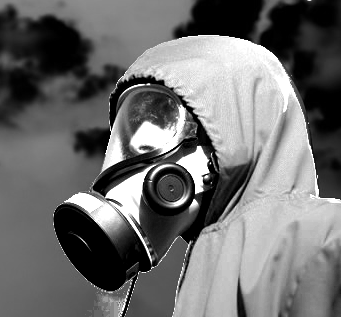Fukushima fallout reported

The report shows that radiation levels are decreasing rapidly, except in the harbour area close to the nuclear plant itself.
While there has been some progress, the authors still express concern at the lack of ongoing support to continue the radiation assessment, which is vital to understand how the risks are changing.
“This report pulls together much of the academic, industry and government studies to form a more complete picture of the amount of radioactivity released, its fate and transport in the ocean, whether we should be worried or not, and what can be predicted for the future,” says lead author Dr Ken Buesseler.
“Overall, the results show a trend of decreasing radiation risk in oceans themselves and to marine life. This is generally true, except for the harbour at Fukushima NPP [nuclear power plant].”
The report has been presented at the Goldschmidt geochemistry conference in Japan.
Since the earthquake and tsunami struck in 2011, the radioactive fall-out on land has been well-documented, but the distribution of radioactivity in the seas and onto the wider oceans is much more difficult to quantify, due to variability in the ocean currents and greater difficulty in sampling.
Although the Fukushima accident was one of the largest nuclear accidents and unprecedented for the ocean, the amount of Caesium-137 (137Cs) released was around 1/50th of that released by the fall out of nuclear weapons and 1/5th that released at Chernobyl.
It is similar in magnitude to the intentional discharges of 137Cs from the English nuclear fuel reprocessing plant Sellafield.
The main release of radioactive material came from the initial venting to the atmosphere, modelling of which suggests around 80 per cent of that fallout came to land on the ocean close to the Fukushima plant.
There are a range of estimates of the total amount of 137Cs release into the ocean, most of which put it at around 15-25 PBq (PetaBecquerel, which is 1015 Becquerel. One Becquerel is one nuclear decay per second).
Other radioisotopes were also released, but the focus has been on radioactive forms of Caesium due to its long half-life for radioactive decay (134Cs = 2 yrs; 137Cs = 30 yrs) and high abundance at Fukushima.
Caesium is very soluble, so it was rapidly dispersed in the ocean.
Ocean mixing processes mean that some areas received more fall-out than others, but the concentration peaked in 2011 at a location right near the plant, which saw caesium levels tens of millions of times higher than prior to the accident.
Over time, and with distance from Japan, levels decrease significantly.
By 2014, the 137Cs signal 2000km North of Hawaii was equivalent to around six times that remaining from fallout from atmospheric nuclear tests from the 1960's, and about 2-3 times higher than prior fallout levels along the west coast of North America.
Most of the fallout is concentrated in the top few hundred metres of the sea. It is likely that maximum radiation levels will be attained off the North American coast in the 2015-16 period, before declining to 1-2 Bq per cubic metre (around the level associated with background nuclear weapon testing) by 2020.
Sea-floor sediments contain less than 1 per cent of the 137Cs released by the Fukushima disaster, although the sea-floor contamination is still high close to the plant.
In 2011, around half the fish samples in coastal waters off Fukushima registered caesium levels above Japan’s 100Bq/kg limit, but by 2015 this had dropped to less than 1 per cent above the limit. However, high levels are still found in fish around the Fukushima port.
Generally, with the exception of species close to the plant, the experts say there will be little long-term measurable effects on marine life.
The radiation risk to human life is actually quite modest compared to the 15,000 lives lost as a result of the initial earthquake and tsunami in 2011.
The most exposed Fukushima evacuees received a total dose of 70 mSv, which (if they are representative of the general population) would increase their lifetime fatal cancer risk from 24 per cent to 24.4 per cent.
But given that there are still over 100,000 evacuees from the Fukushima area, many industries such as fishing and tourism remain almost entirely shut down.
“We are still concerned that there is little support to continue assessments as time goes by, in particular from the US federal agencies which have not supported any ocean studies,” Dr Buesseler said.
“This is not good, as public concern is ongoing, and we can learn a lot even when levels go down in the environment, and are no longer of immediate health concern".”
Professor Bernd Grambow, Director of the SUBATECH laboratory, says the struggle is not over.
“While the distribution and impact of radioactive material becomes clearer with time, a lot of work still needs to be done,” he said.
“Discharge flux rates of Cs-137 to the ocean continue to be in the range of some TBq/yr. Forest and soil bound Cs-137 is only slowly being washed away, with waste piles accumulating in many places
“The evolution of transfer mechanisms and the flux of radioactive material through soils, plants and food chain from land to ocean are still insufficiently understood and still deserve close attention of the international scientific community.”
http://goldschmidt.info/2016/








 Print
Print